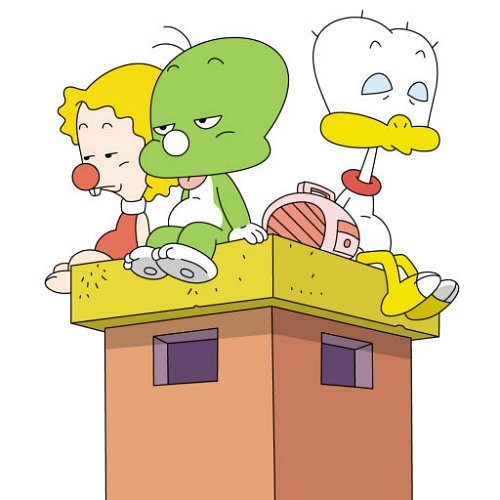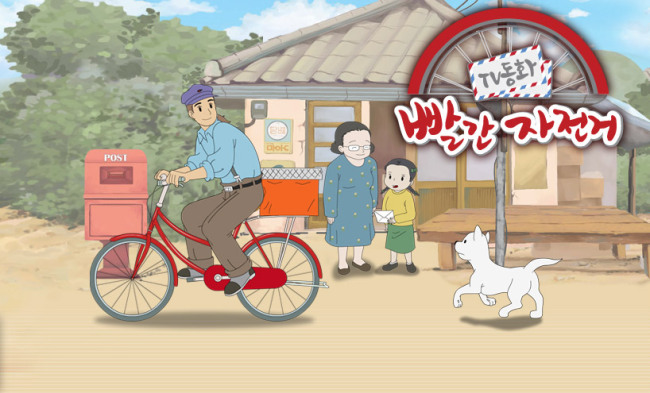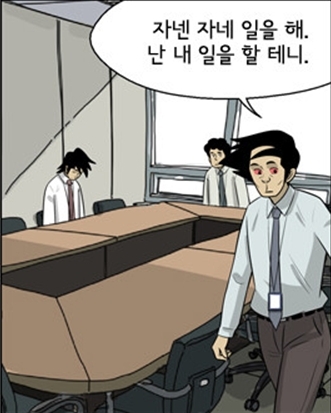Korea eyes cartoon renaissance
With webtoons being one of the most popular forms of leisure, authorities seek to support artists, exports
By Korea HeraldPublished : June 20, 2013 - 20:01

Comic books and cartoons have long been good friends to Koreans.
From the early days of Lee Do-young, who satirized Japanese colonialists, to green dinosaur Dooly seeking his mother among mankind, and the latest webtoon by Yoon Tae-ho on the lives of office workers, cartoons have been a great source of fun, consolation and encouragement to many Koreans.
According to the Ministry of Culture, Sports and Tourism, 1 in 3 people here enjoy cartoons or comics every week. Through Naver, the country’s largest portal website, about 17 million people mark 1.5 billion page views every month in its webtoon section, making it one of the most frequently enjoyed forms of leisure.
“Cartoons have easy access. All you need to do is just bring the book, flip the pages and indulge in the actions of the characters. Nowadays it has become much easier ― you just have to scroll down the screen to see webtoons,” said Chang Jin-young, professor of cartoons at Sangmyung University. “It is not as descriptive and serious as books, is quieter than TV or radio, and many of the topics depicted are very familiar and can easily be found in our everyday lives.”
From the early days of Lee Do-young, who satirized Japanese colonialists, to green dinosaur Dooly seeking his mother among mankind, and the latest webtoon by Yoon Tae-ho on the lives of office workers, cartoons have been a great source of fun, consolation and encouragement to many Koreans.
According to the Ministry of Culture, Sports and Tourism, 1 in 3 people here enjoy cartoons or comics every week. Through Naver, the country’s largest portal website, about 17 million people mark 1.5 billion page views every month in its webtoon section, making it one of the most frequently enjoyed forms of leisure.
“Cartoons have easy access. All you need to do is just bring the book, flip the pages and indulge in the actions of the characters. Nowadays it has become much easier ― you just have to scroll down the screen to see webtoons,” said Chang Jin-young, professor of cartoons at Sangmyung University. “It is not as descriptive and serious as books, is quieter than TV or radio, and many of the topics depicted are very familiar and can easily be found in our everyday lives.”


“Korean cartoons have somewhat regained strength through webtoons, which are said to be uniquely Korean. New posts are uploaded every week with people giving feedback, which is reflected in the following postings and eventually create pieces of art built on two-way communication,” Chang said.
Content in the medium has also been a source of profit in other fields, as many webtoons or graphic novels are made into movies, TV dramas, books and even brands for consumer goods. Moreover, it has become a new export item, seeing $13.2 million in trade surplus as of 2011. The series “Priest” was turned into a Hollywood film in 2011, and “manhwa,” the Korean word for cartoons, has become a common search keyword used by overseas fans.
However, insiders complain that the market is driving artists away.
“Illegal online distribution as well as portal sites’ free distribution of webtoons in exchange for relatively low fees left little profits for most cartoonists and webtoonists,” said Park Seok-hwan, a comic critic.
In a meeting with Culture Minister Yoo Jin-ryong earlier this month, some of the most respected cartoonists in Korea urged the government to support the industry.
“We need a system that can embrace young creators’ challenges so that cartoonists could try out new things without fear of failure,” said Choi Gyu-seok, a cartoonist, at the meeting.
And the ministry on Thursday announced a set of plans to create the renaissance of Korean comics. The authorities will inject 5.5 billion won in supporting production of “good cartoons” and look over publishers’ or portal sites’ contracts with artists to make sure that content creators are rightfully rewarded for their creative work.
A total of three webtoon sites ― Lehzin.com, comicplus.com and U.S.-based tapastic.com ― will make efforts to diversify their distribution channels, which will be subsidized by the government in the future.
“We will also support the translation of Korean cartoons and webtoons into four languages to invite foreign experts to facilitate export,” Lee Hye-rim, a ministry official, said.
By Bae Ji-sook (baejisook@heraldcorp.com)
-
Articles by Korea Herald








![[KH Explains] Hyundai's full hybrid edge to pay off amid slow transition to pure EVs](http://res.heraldm.com/phpwas/restmb_idxmake.php?idx=644&simg=/content/image/2024/04/18/20240418050645_0.jpg&u=20240419100350)







![[From the Scene] Monks, Buddhists hail return of remains of Buddhas](http://res.heraldm.com/phpwas/restmb_idxmake.php?idx=652&simg=/content/image/2024/04/19/20240419050617_0.jpg&u=20240419175937)

![[KH Explains] Hyundai's full hybrid edge to pay off amid slow transition to pure EVs](http://res.heraldm.com/phpwas/restmb_idxmake.php?idx=652&simg=/content/image/2024/04/18/20240418050645_0.jpg&u=20240419100350)

![[Today’s K-pop] Illit drops debut single remix](http://res.heraldm.com/phpwas/restmb_idxmake.php?idx=642&simg=/content/image/2024/04/19/20240419050612_0.jpg&u=)